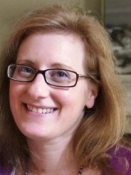Context
On the first full day of my new grade 12 West and the World: World History from the 16th Century course, I had my students do an exercise using unfamiliar maps presented without historical context. Having never met this class before, it was a shocking yet memorable way to teach them the importance of context in history. This activity incorporated the Historical Thinking Concepts of historical perspective-taking and using primary source evidence.
Lesson:
To begin, I told the class that I was going to do an activity with them that would involve primary source evidence – direct evidence from a particular time period. I didn’t say much else, which may have seemed odd since this was our first meeting as a class. I divided the class into groups. Each group was given an unlabelled medieval T-O map which didn’t even appear to be a map upon first glance. I asked the groups to try to figure out what the object was, and then to write down any questions that they had about it. I wanted them to focus on asking good questions rather than trying to guess what it was. To make the exercise somewhat easier I gave the same map to each group so that they might overhear some of what others were saying. After a few minutes I introduced another map to each group. In succession the maps I used were a medieval zonal map, a map from 12th century China that clearly showed the physical outlines of the country and its rivers, and finally a 13th century Carte Pisan showing maritime routes throughout the Mediterranean Sea. Though this exercise could have been done with any maps or objects taken out of context, I purposely chose maps relevant to the medieval worldview that was starting to change leading into the Renaissance, the first topic of study in this course. The inclusion of the Chinese map was also purposeful as I didn’t want to give students the impression that maps were only products of western cultures.
As the groups perused the maps, I circulated asking them about their guesses and their questions. I subtly encouraged them to ask questions about who might have created such objects and why. Most groups had clued into the fact that the objects were maps, but few had any concrete ideas of what kinds of maps they might have been. Most students seemed highly engaged and curious.
After about 20 minutes, I took away the maps, then I asked students to reflect on their experience: how hard did they find the exercise? What was frustrating about it? I allowed students to make some guesses about the maps. It was obvious that even though students felt flustered they had made a good effort to try to figure out the meaning of the evidence in front of them. I concluded by saying that I hoped they would always remember this feeling of frustration when looking at a product of history without historical context. I wrote a quick note on the board about skills of the historian: 1. need context for events; 2. use primary source evidence.
With students still feeling somewhat flustered, I followed up by showing a Power-Point presentation on the history of map-making in which I briefly explained what some of the maps were and tried to give some context for them as evidence of the narrow, Christian worldview of Middle Ages mapmakers. I quickly drew a simple timeline on the board so that students would understand their upcoming homework reading on the Renaissance. The timeline extended from ancient Greece to the Renaissance. In Socratic fashion I labeled some portions of the timeline with key descriptors such as pagan, sacred, Christianity dominant, and secularism introduced.
What I Would Do Differently:
Though I was generally pleased with having created a memorable experience to which I could always refer back when students needed to see the importance of context, I could have made a few improvements. Firstly, I used too many maps, making the experience too long and too overwhelming for some of the students, particularly the ones who had not taken history since grade 10. Secondly, I should have asked the students to write a quick reflection in their own notebooks, in their own words, on how hard it was to do the exercise without context. I then could have explained the skill of context a lot more and linked it more concretely to the Historical Thinking Concept of historical perspective-taking and its emphasis of understanding the motivation behind the creators of primary source evidence such as maps.
Adaptations for Other Courses:
I feel that this type of “shock and awe” experience would work quite well with other history classes. With younger grades the teacher would want to pick primary source objects of more direct relevance to the students’ lives, possibly even things like smart phones or tablet computers. For Canadian history, little known aspects of Canadian culture might make for interesting experiences. For Ontario teachers who are technically supposed to begin the course with World War One, this might be a good opportunity to introduce the Canadian context for the war, possibly by using objects or documents that demonstrate Canadian attitudes toward the British Empire and/or different perceptions of world events in French and English Canada.


